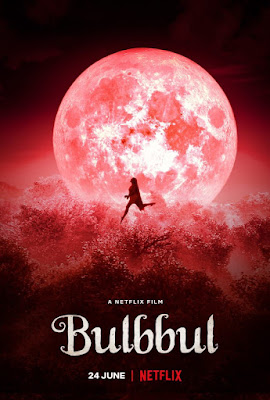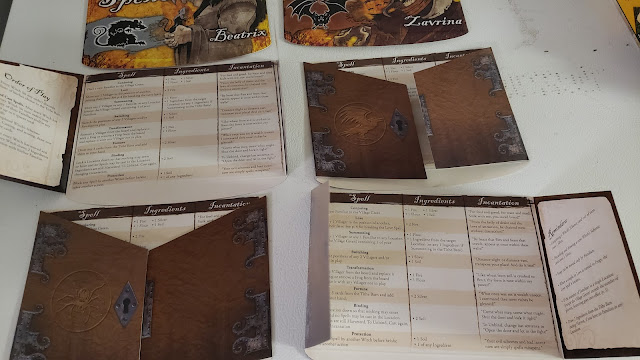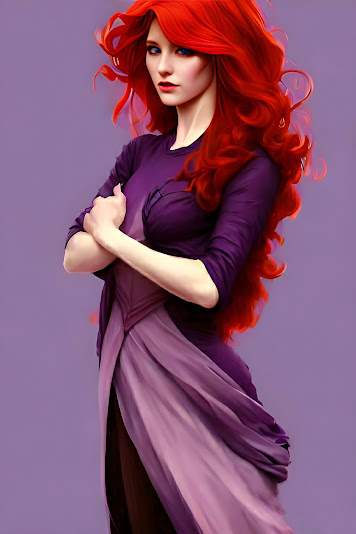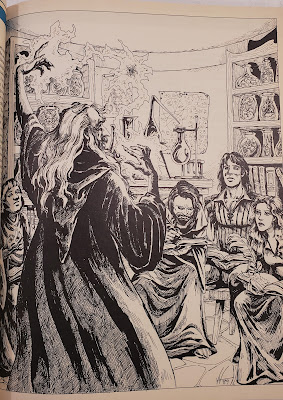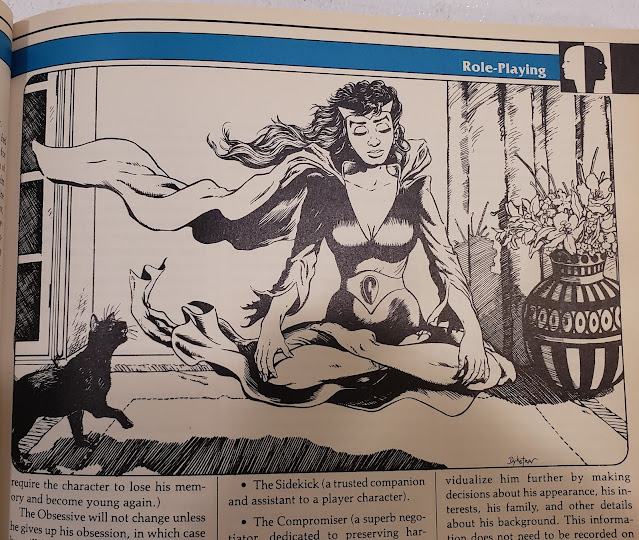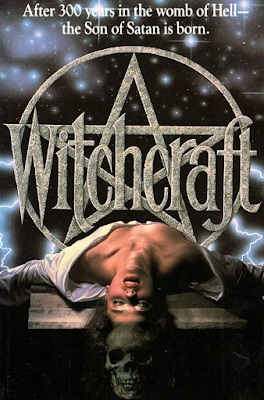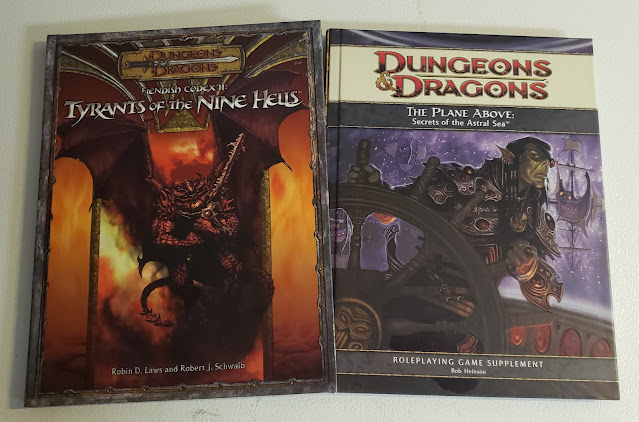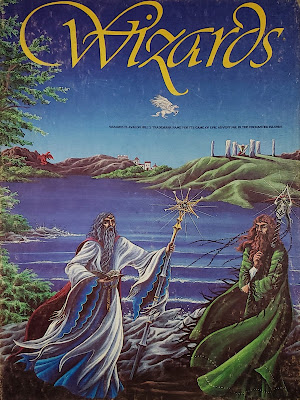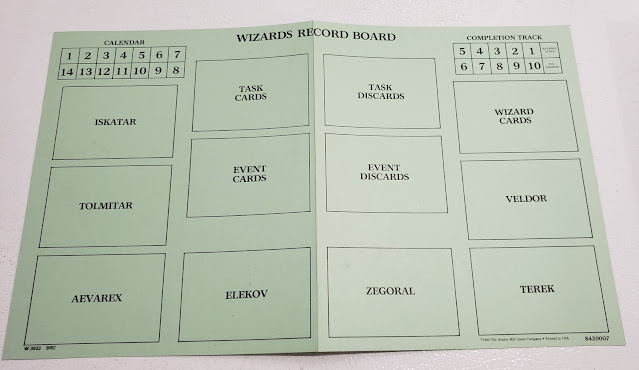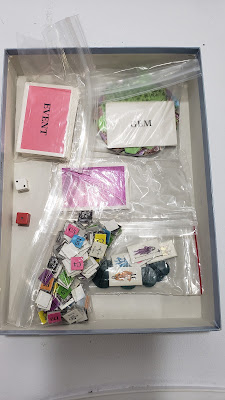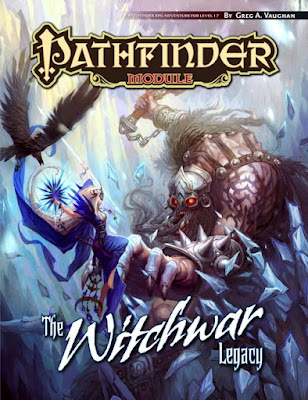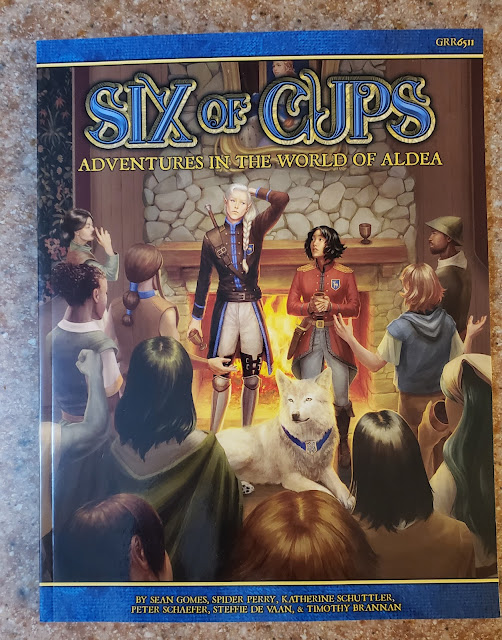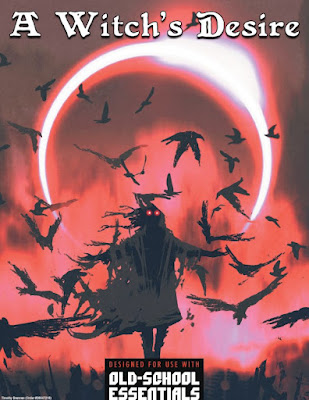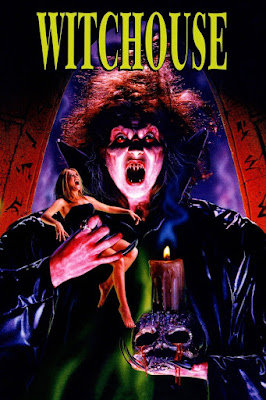100 Days of Halloween: World of the Witch 4E
 Moving up to D&D 4e now (I have pretty much-covered everything for 3e), I get to one of the stand-alone Witch Classes. How is it and how does it compare to the Witch in Player's Option: Heroes of the Feywild?
Moving up to D&D 4e now (I have pretty much-covered everything for 3e), I get to one of the stand-alone Witch Classes. How is it and how does it compare to the Witch in Player's Option: Heroes of the Feywild?PDF. 105 pages. Full-color cover and interior art.
I would call this book a "full service" D&D 4e book. It was published well after 4e was done as a line so it has the advantage of a long development time. It also can incorporate the best of what 4e had to offer.
To start we have seven character themes; the Black Cloak of Vanuna, Cat Sister/Brother, Cauldron Adept, Maleicar, Sea Witch, Temptress/Tempter, and the Witch Priestess. Each gaining some sort of mechanical and roleplaying benefits.
Witch Class
Next, we get to the Witch Class. This is not a subtype of the Wizard like we see in Heroes of the Feywild, but their own class. There is even a nice sidebar about Witches vs. Warlocks. For this witch the abilities are Charisma, Constitution, and Wisdom, so exactly like I would suspect.
There are four archetypes, here known as covens. They are the Hag Witch (combat ready), Karmic Witch (reactor), Primeval Witch, and White Witch. Each gets a feature or power.
All witches get the Bewitch feature at 1st level as well as the Ritual Caster feat.
As with all 4e books, we get a long listing of the various at-will, encounter, daily and utility powers they get. A lot of these look really fun. Makes me miss 4e.
Paragon Paths
At 11th level you can choose a Paragon Path with gives you access to other magic. These are the Night Hag, Black Witch, Pact Witch (you have to be a Witch AND a Warlock), and Shaper. There is some text on other published Paragon Paths.
Note: There is no Epic Destiny here.
New Feats
While not as bad as 3e in terms of feats, 4e still has more than 5e does. But that is fine, I like feats to be honest.
Tools of the Trade
lots of mundane and magical tools for the witch.
Lore & Locations
This covers covens, people, places, and things. This book also has a Daughters of Darkness coven! I suppose that should not be a surprise really. Lots of variety here and that is nice.
There are some NPCs here including a goddess-like figure and some powerful witches.
The Witch Kingdom of Amarath
Now, this has my attention. It was a kingdom for and by witches and ruled over by three Witch Queens. There is not a lot here, but for me, it is worth the price of the PDF.
Witch Adventures
There is a table of 50 plot hooks followed by a section on more developed ideas for a campaign.
There are even new monsters and NPCs listed.
All things considered, I rather like it all. There are a lot of good ideas here and the powers feel about right. I am a bit removed from 4e nowadays, but this makes me want to play it some more.
Compared to the Player's Option: Heroes of the Feywild witch this one has certain benefits. For me, I might combine them and play them all as one class. I would certainly grab the Witch Queen Epic destiny to use here.
The art is fine, but all over the place in terms of quality. I don't fault them for that really. Many I recognize and have used myself, to be honest.
There is no POD option for this and I am going to take that as a plus. Why? Well, I mentioned the modularity of the 4e material before, well I can take this, print the pages I want, and build my own 4e witch book to use. Combine it with other 4e material I have and I can have the ultimate 4e witch. And this book serves as the base for all of that.



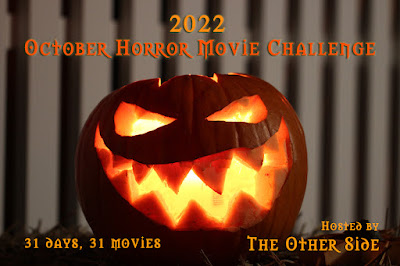




.jpg)

